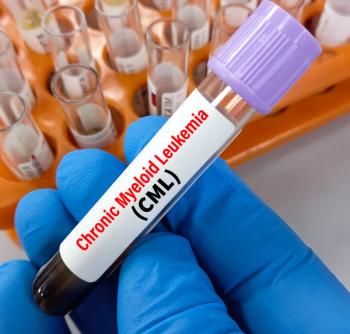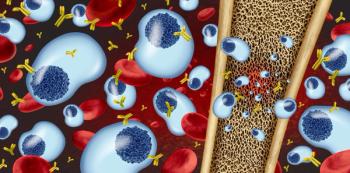
- Pharmacy Careers Fall 2013 0
Worlds Apart: Health Care and Pharmacy in China
My encounter with the Chinese health care system revealed practices very different from the ones in the United States.
My encounter with the Chinese health care system revealed practices very different from the ones in the United States.
I have always believed that in order to understand myself, I need to learn about the beliefs and practices of others. As a student pharmacist and future health care provider, I was offered the opportunity to go on a 10-day-long delegation on medicine to China in June 2012, which allowed me to observe firsthand the Chinese health care system and how it differs from ours.
On my first night in Beijing, I decided to conduct an impromptu experiment. I went to a community pharmacy down the street from my hotel, told the pharmacist I had nausea, and asked for ondansetron. I had no prescription for the medication, and, shockingly, the pharmacist did not ask for one. In fact, none of the employees knew what ondansetron was, and they couldn’t find it in their pharmacy database. In the end, they gave me an alternate medication, which cost only 10 Yuan (approximately $1.50).
This initial encounter with the Chinese health care system raised multiple questions that I would try to answer over the next week and a half. I was curious whether there were any laws in place to regulate dispensing of medications without prescriptions as well as to limit the potential for abuse of medications such as antibiotics or opioids. I wondered how much latitude pharmacists had in prescribing or dispensing medications and how this impacted patients’ access to medications. I was also interested in how much medications and health services in general cost.
Understanding Pharmacy in China
To better understand how pharmacy in China works, I did some research. I discovered that there are 2 different routes for pharmacy education in China: a degree in pharmaceutics, which requires completion of a 6-year program, and a degree in pharmacology, which requires a 4-year program. Both program types are run by schools of medicine.
The pharmaceutics degree limits the pharmacist’s practice to drug manufacturing, while the pharmacology degree provides only limited clinical training. Compared with our system of pharmacy education, neither of these routes allows pharmacists to take a major role in clinical decision making. In more Westernized Chinese cities, such as Shanghai, however, there is a trend toward enhancing pharmacists’ participation in patient care and increasing their clinical training by sending them to Western countries where they get exposed to more developed settings.
Slide show:
The practice of traditional Chinese medicine (TCM) is the area in which I witnessed the most significant difference between the Chinese and Western health care systems. TCM encompasses a wide variety of practices, such as acupuncture, herbal medicine, and energy therapies. The vast majority of the Chinese health care providers I met believed TCM was effective despite a lack of supportive research studies. When asked about the lack of scientific evidence that TCM works, they argued that it has been successfully curing patients for the past 5000 years.
From my perspective, however, the lack of any unbiased record keeping proving the effectiveness and tracking any possible adverse effects of TCM is a major shortcoming. Moreover, there are no metrics of disease process improvement as a result of treatment with TCM, whether subjective, clinical, or investigational. Finally, those who argue in favor of TCM ignore the possibility that any improvement in patients treated using it may be due to the placebo effect.
A pharmacist in Shanghai explained to me that his hospital was using some of its very limited funds to conduct clinical trials testing the effectiveness of combining Western medicine and TCM in producing better disease outcomes. In a trial treatment of asthma, their approach was to use regular bronchodilators for management of acute asthma attacks and unspecified TCM treatments for long-term management of asthma, in order to avoid use of steroids, which can have various adverse effects.
I personally believe that TCM needs to be studied further on a clinical and molecular basis to assess its safety and effectiveness. Even if TCM is effective, it may not be being used in the best way possible. Once we know more about whether and how TCM works, we can act to prevent its use, find better ways of using it, or combine it with Western medicine. The main advantages of TCM in China are the ease of offering it in outpatient settings over short periods of time, its low cost, and the deep experience local health care providers have in practicing it. All of those factors increase patients’ access to treatment in a country with relatively low income levels.
Inpatient Pharmacy Practice
Inpatient pharmacy practice in China was another major difference that I encountered. Most of the hospitals I visited lacked any electronic patient records. Very little automation was employed to improve medication batching, packaging, or dispensing. The process depended entirely on the performance of people, who thankfully proved very accurate and well trained. I was surprised to find that there were only approximately 100 medications used to treat all disease conditions in many of the hospitals. This “formulary” consisted mainly of herbs, chemically treated tea, and sometimes insects and even worms. Dose measuring was performed using simple tools such as manual scales.
In conclusion, my brief encounter with the Chinese health care system revealed practices very different from the ones we are familiar with in the United States. In general, Chinese health care is dominated by physicians, who outnumber pharmacists and nurses combined. Nonetheless, I saw the potential for growth of pharmacists’ involvement in clinical decision making. As a result of my exposure to a different approach to medicine, I was reminded that Western medicine is an answer, but it is not the only answer.
Ahmed Eid is a second-year pharmacy student at Notre Dame of Maryland University School of Pharmacy.Ahmed was, briefly, a practicing physician in Egypt. He currently works as a pharmacy technician for The Johns Hopkins Hospital. He is fascinated by the very organized and structured Western health care system, but he believes that no one system has all the answers. In the summer of 2012, he travelled to China on a delegation on medicine to learn more about the Chinese health care system and the traditional Chinese medicine.Ahmed has also contributed to his student newsletter, Quarterly Elixir, by writing about expanding pharmacists’ professional roles by giving them the right to prescribe.
Articles in this issue
almost 12 years ago
Test Your Skills: Portion Controlalmost 12 years ago
Employment Contract Clauses: Are There Long-Term Implications?almost 12 years ago
Dress for Successalmost 12 years ago
2013 Next-Generation Pharmacistâ„¢ Awardsalmost 12 years ago
RESPy Recap 2011-2013almost 12 years ago
The Expanding Role of the Specialty Pharmacistalmost 12 years ago
Navigation Skills: The Interviewalmost 12 years ago
Gadget Guidealmost 12 years ago
A New Era for PharmacistsNewsletter
Stay informed on drug updates, treatment guidelines, and pharmacy practice trends—subscribe to Pharmacy Times for weekly clinical insights.






















































































































































































































